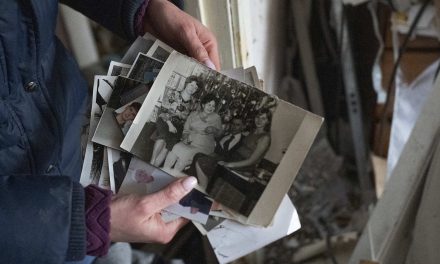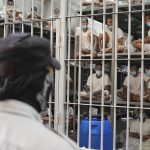
The wildfire that has brought sheer devastation to Maui is especially heartbreaking for Hawaii because it struck one of its most historic towns and the onetime capital of the former kingdom.
Lahaina holds deep cultural significance for Hawaiians. The town was once the royal residence of King Kamehameha, who unified Hawaii under a single kingdom by defeating the other islands’ chiefs. His successors made it the capital from 1820 to 1845, according to the National Park Service.
Kings and queens are buried in the graveyard of the 200-year-old stone Wainee Church. Later named Waiola, the church that once sat up to 200 people was photographed apparently engulfed in flames this week.
“It was really the political center for Hawaii,” said Davianna McGregor, a retired professor of ethnic studies at the University of Hawaii at Manoa.
Dozens of people were killed and hundreds of structures were damaged or destroyed in the blaze that ignited on August 8 and quickly spread throughout the western Maui community of less than 13,000 residents.
It is feared that the fire also consumed much of Lahaina’s historic Front Street, home to restaurants, bars, stores and what is believed to be the United States’ largest banyan, a fig tree with aerial roots that grow out of branches and eventually reach the soil and become new trunks.
Richard Olsten, a helicopter pilot with tour operator Air Maui, said he and other pilots and mechanics flew over the scene before work to take stock.
“All the places that are tourist areas, that are Hawaiian history, are gone, and that can’t be replaced,” he said. “You can’t refurbish a building that’s just ashes now. It can’t be rebuilt — it’s gone forever.”
Francine Hollinger, a 66-year-old Native Hawaiian, said witnessing the destruction of Front Street was “like losing a family member … because they’ll never be able to rebuild it, like we wouldn’t be able to bring back our mother or father.”
The full extent of loss will not be known until officials can assess the damage done by the flames, fanned by winds caused in part by Hurricane Dora moving westward hundreds of miles to the south of the island state.
“I’ve seen my share of a wildfire’s destruction on a community, but in more than eight years of covering these disasters as a video and photojournalist, the scene over Hawaii was one of the worst. Based in Las Vegas, I’m used to being dispatched to wildfires in other places. I flew to Hawaii on August 9, and by August 10, I was in a helicopter flying over Lahaina, a normally vibrant west Maui town that draws visitors from all over the world.
What struck me the most was the lack of color of the scorched earth sandwiched between glistening blue ocean and deep green-brown mountains in the distance. No plants or trappings of island life. Just gray. Street after street after street was nothing but rubble and foundation. Ash and debris. It was so one-dimensional that it was hard to imagine the scenic town that was once here. King Kamehameha III Elementary School was decimated, a mess of collapsed steel. There was a neighborhood near the water that was completely gone — not a single structure remained.
I couldn’t see any active flames amid pockets of wispy smoke. One sight made me worried and provided a grim clue of the chaos of approaching fire: Charred vehicles in the road along Front Street. They weren’t parked on the side of the road. Were drivers actively trying to flee and couldn’t? What happened to them? I’m also a former wildland firefighter. I observed that the area of fire out in the trees and brush seemed very small compared to the amount of the town that was burned.
What seemed to be a large majority of the fire was in the town itself. I’m used to seeing something like a 300,000 acre-fire burning down a little town. But this looked to me like a small wildland fire that exploded as it hit homes and businesses. The fire’s reach extended to the ocean. I could see burned ships out in the water, which made me ponder the force of ember-carrying winds. From above, I also didn’t expect to see people. Here and there, people were walking around, seeming to begin assessing the devastation. Now that officials say the Lahaina fire is 80% contained, perhaps we’ll start to see that more than ash gray remains.”
– Ty O’Neil, AP Journalist
The Lahaina Historic District is home to more than 60 historic sites, according to the Advisory Council on Historic Preservation. A National Historic Landmark since 1962, it encompasses more than 16,000 acres (6,500 hectares) and covers ocean waters stretching a mile (1.6 kilometers) offshore from the storied buildings.
For Native Hawaiians, the town is a connection to their ancestors. Lahainaluna High School was where royalty and chiefs were educated, and also where Kamehameha and his Council of Chiefs drafted the first Declaration of Rights of the People and the Constitution for the Hawaiian Kingdom.
“From going from an absolute monarchy to a constitutional monarchy, the ruling chiefs in and around Lahaina and those educated at Lahainaluna played very prominent roles in our governance at that time,” McGregor said.
The capital was moved to Honolulu in 1845, but Lahaina’s palace remained a place where royalty would visit. Lahaina also has a rich history of whaling, with more than 400 ships a year visiting for weeks at a time in the 1850s. Crew members sometimes clashed with missionaries on the island.
Sugar plantations and fishing boosted the economy over the decades, but tourism is the main driver now. Nearly 3 million visitors came to Maui last year, and many of them come to the historic town.
The fire is “just going to change everything,” said Lee Imada, who worked at the Maui News for 39 years, including the last eight as managing editor until his retirement in 2020. “It’s just hard to register, even right now, what the full impact of this is going to be.”
Imada lives in Waikapu, on Maui, but has ancestral ties to Lahaina going back generations. His mother’s family owned a chain of popular general stores, and his granduncles ran the location on Front Street until it closed around 60 years ago.
He recalled walking down Front Street among the tourists as they shopped or ate, looking at the banyan tree, and enjoying the beautiful ocean views from the harbor.
“It’s just sort of hard to believe that it’s not there,” Imada said. “Everything that I remember the place to be is not there anymore.”

















